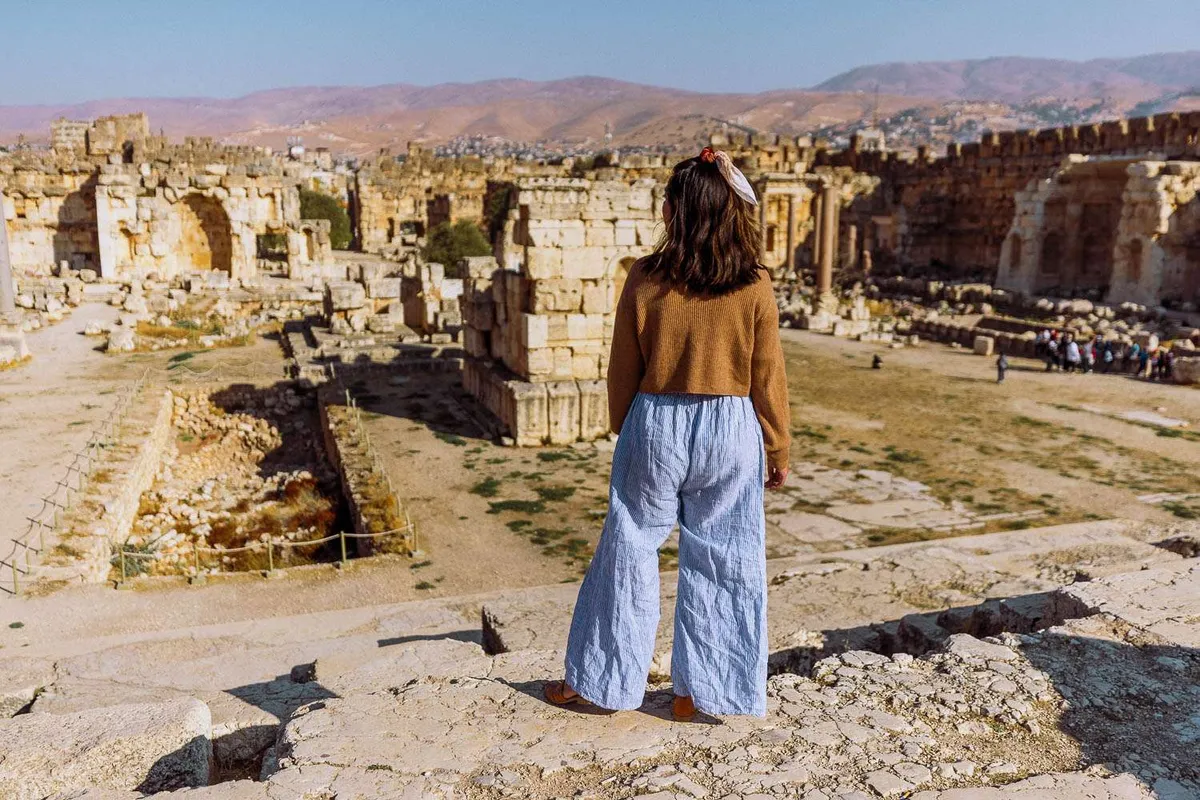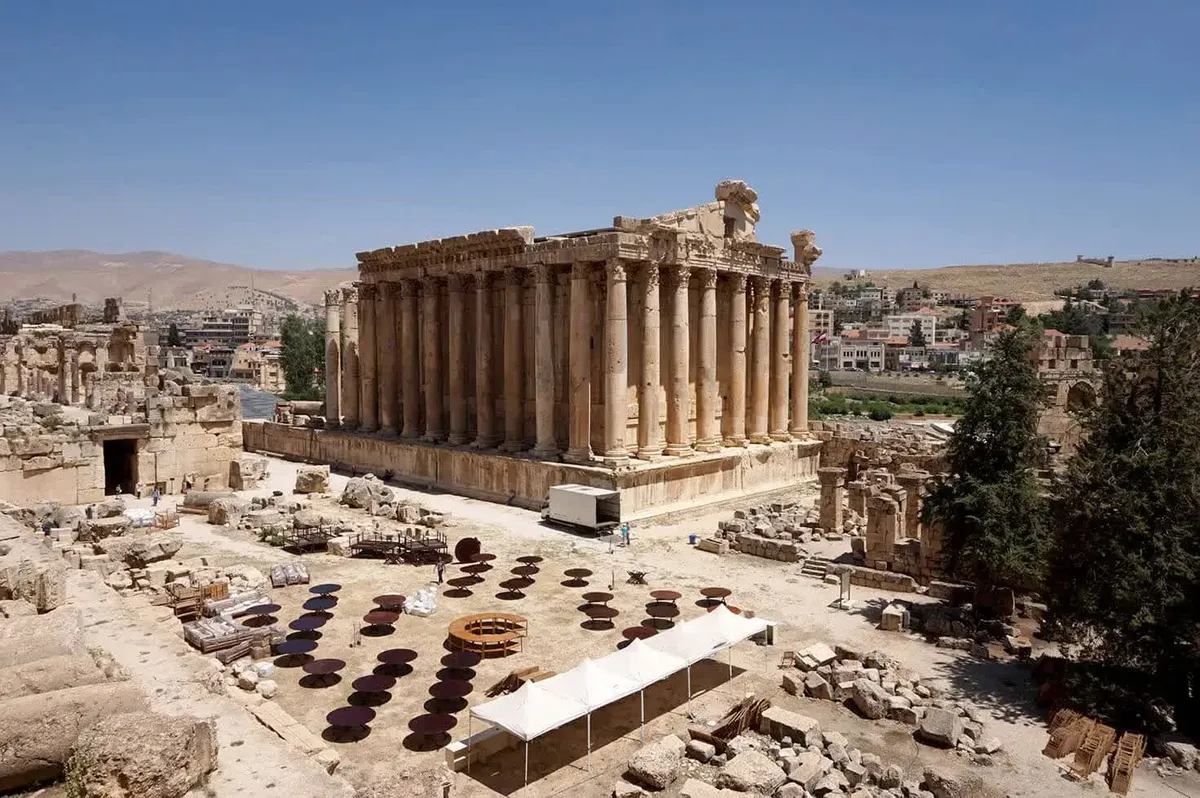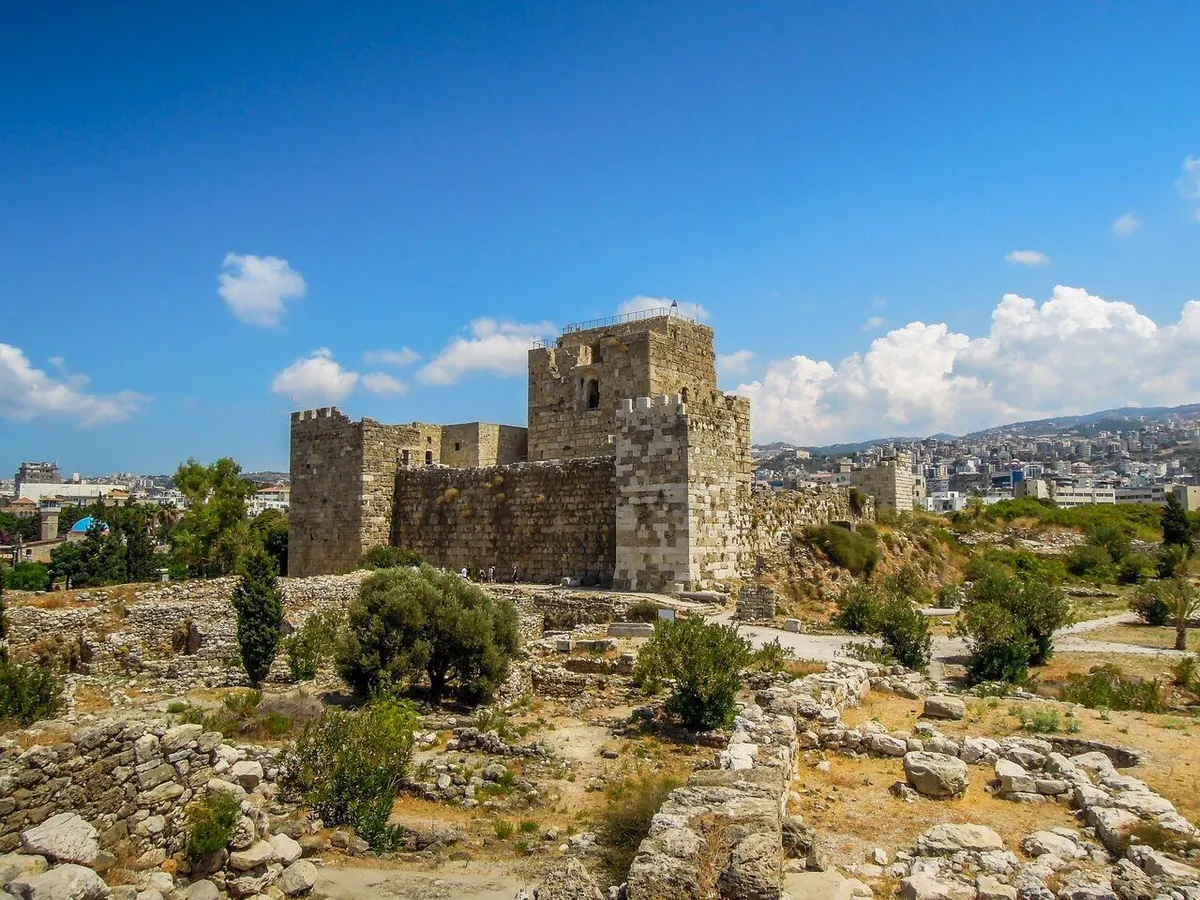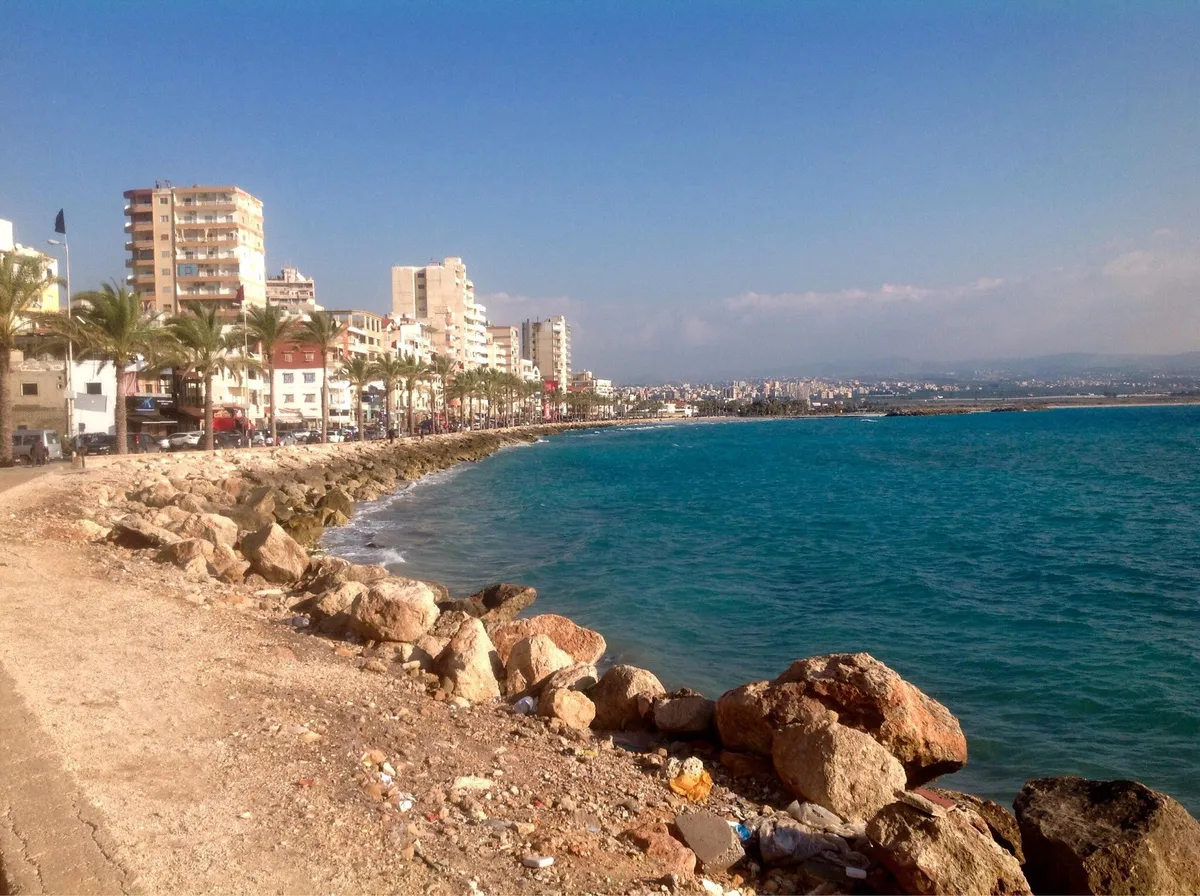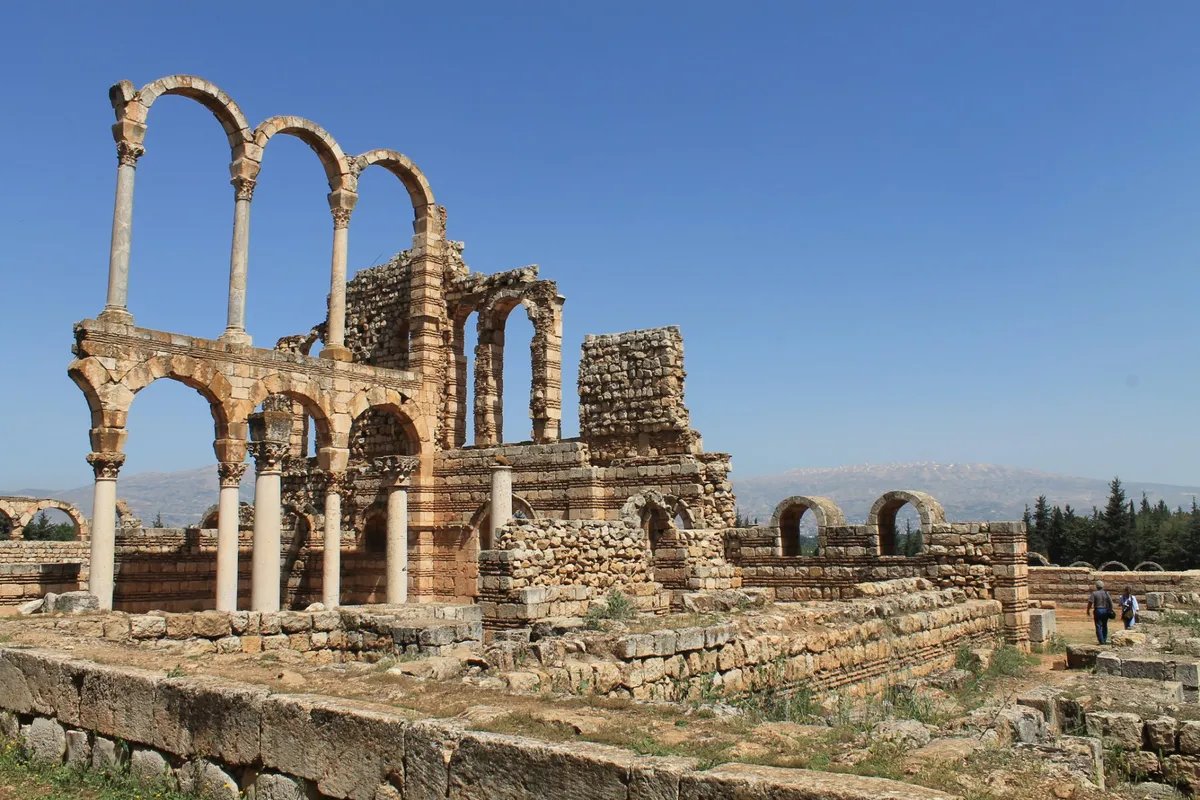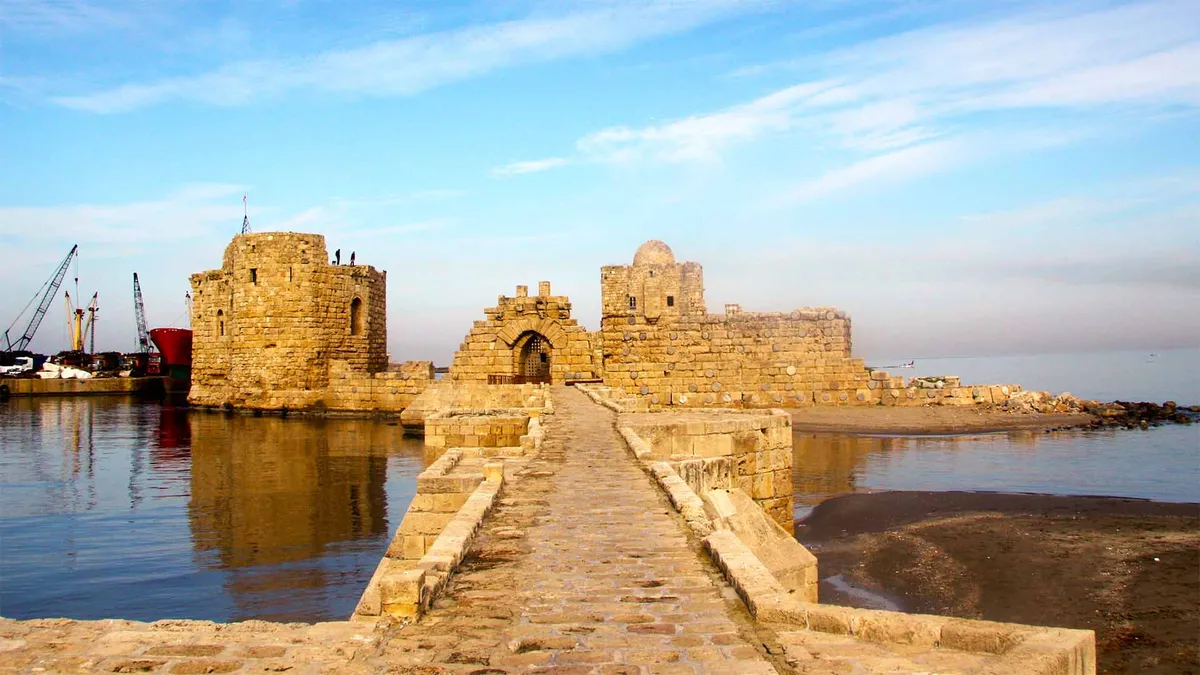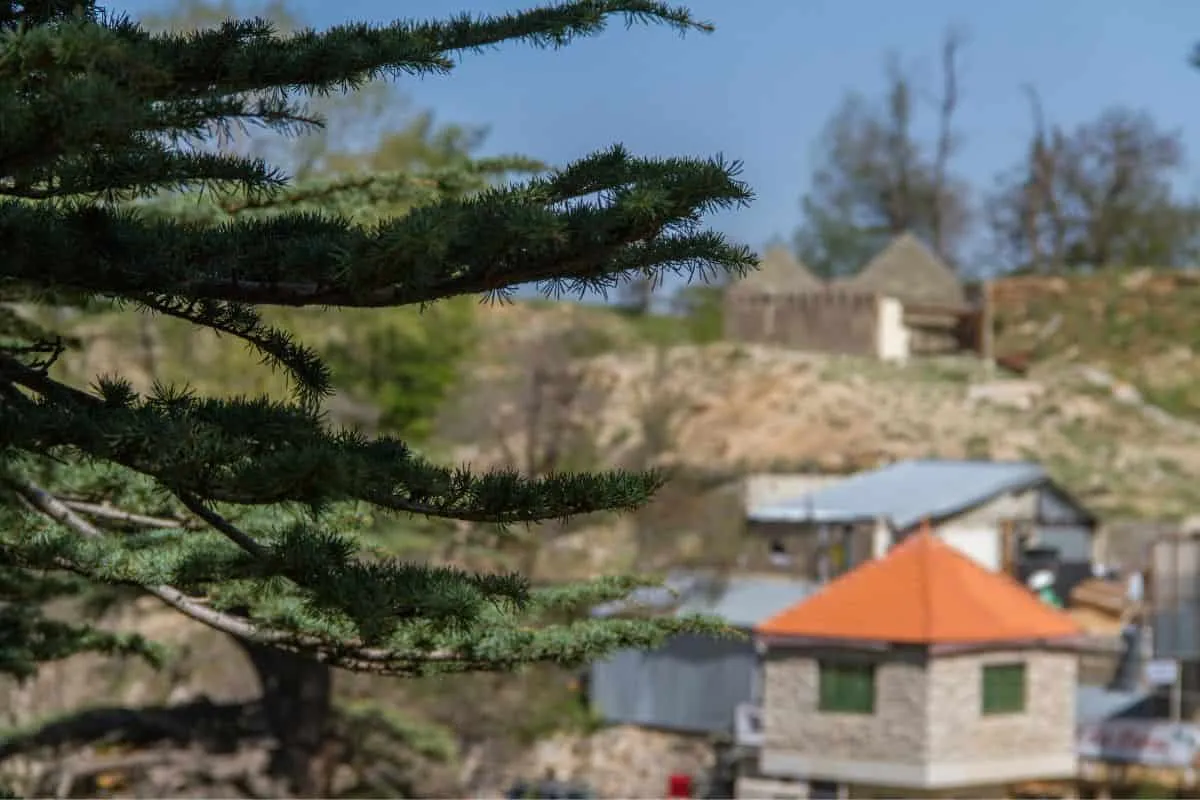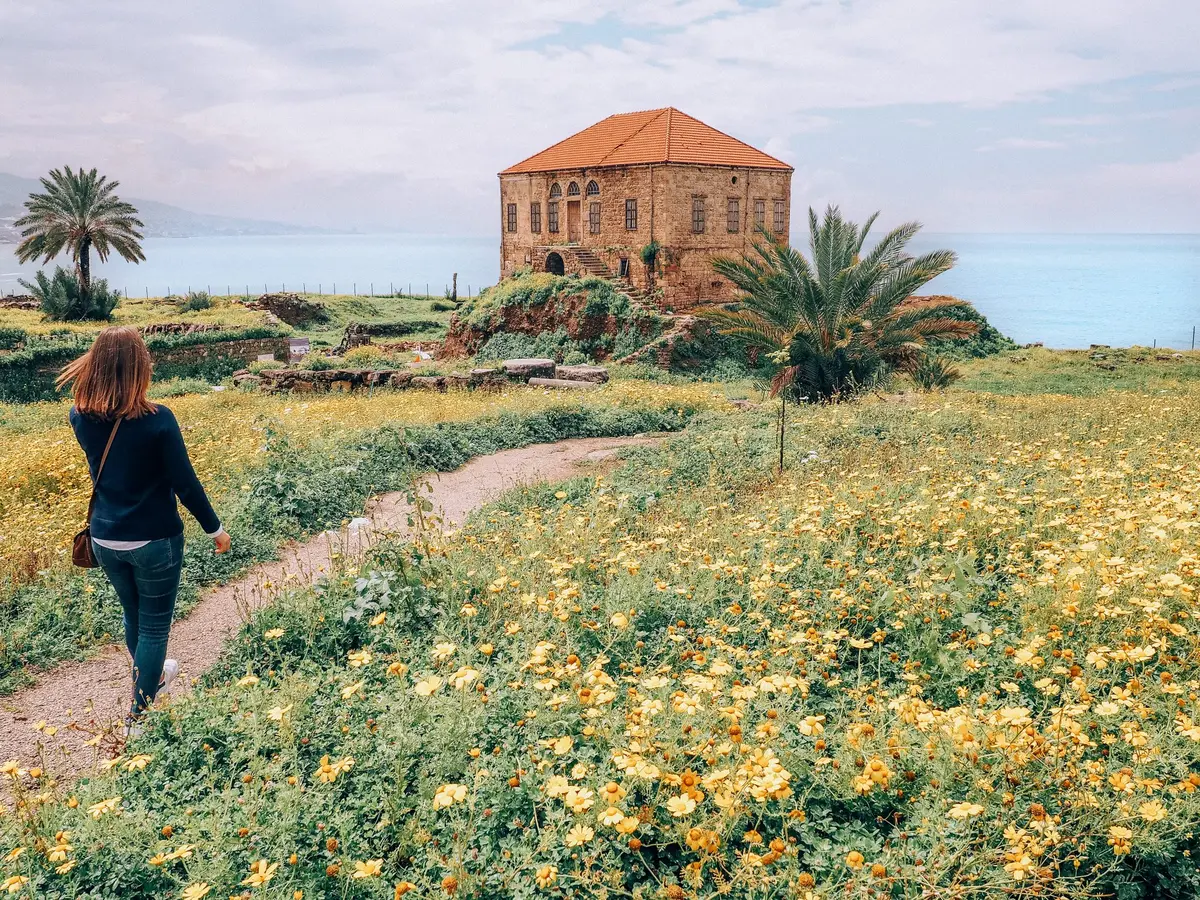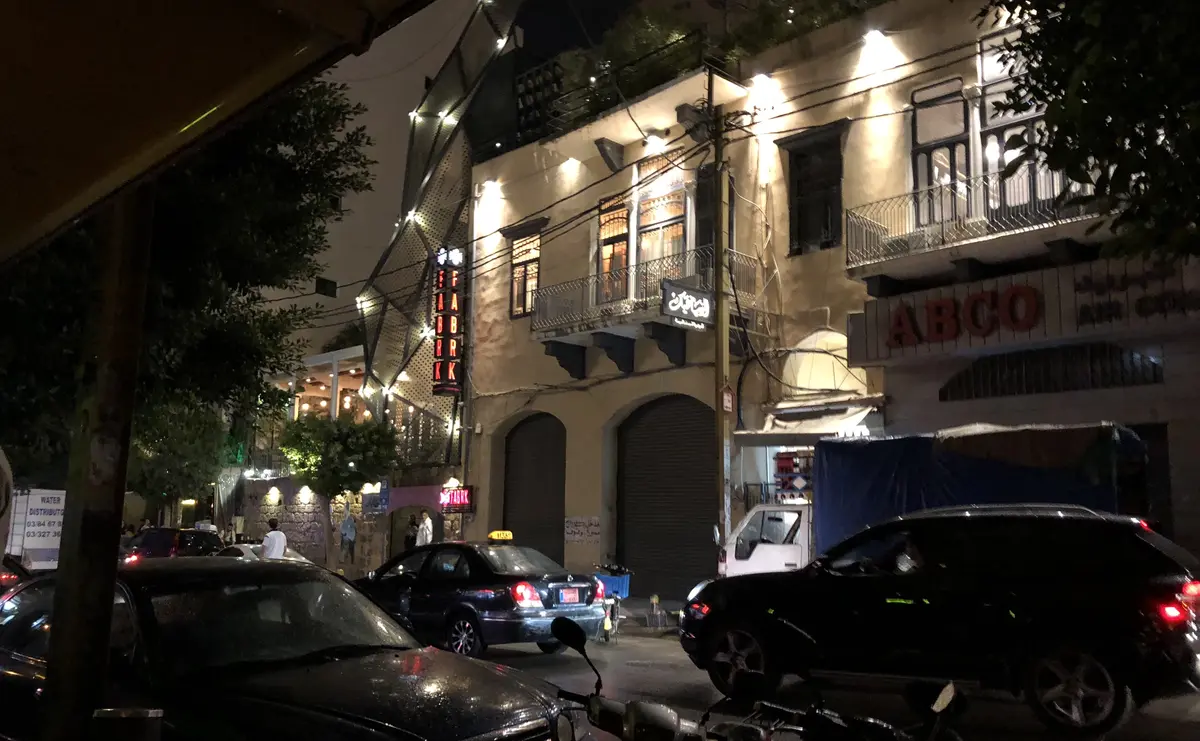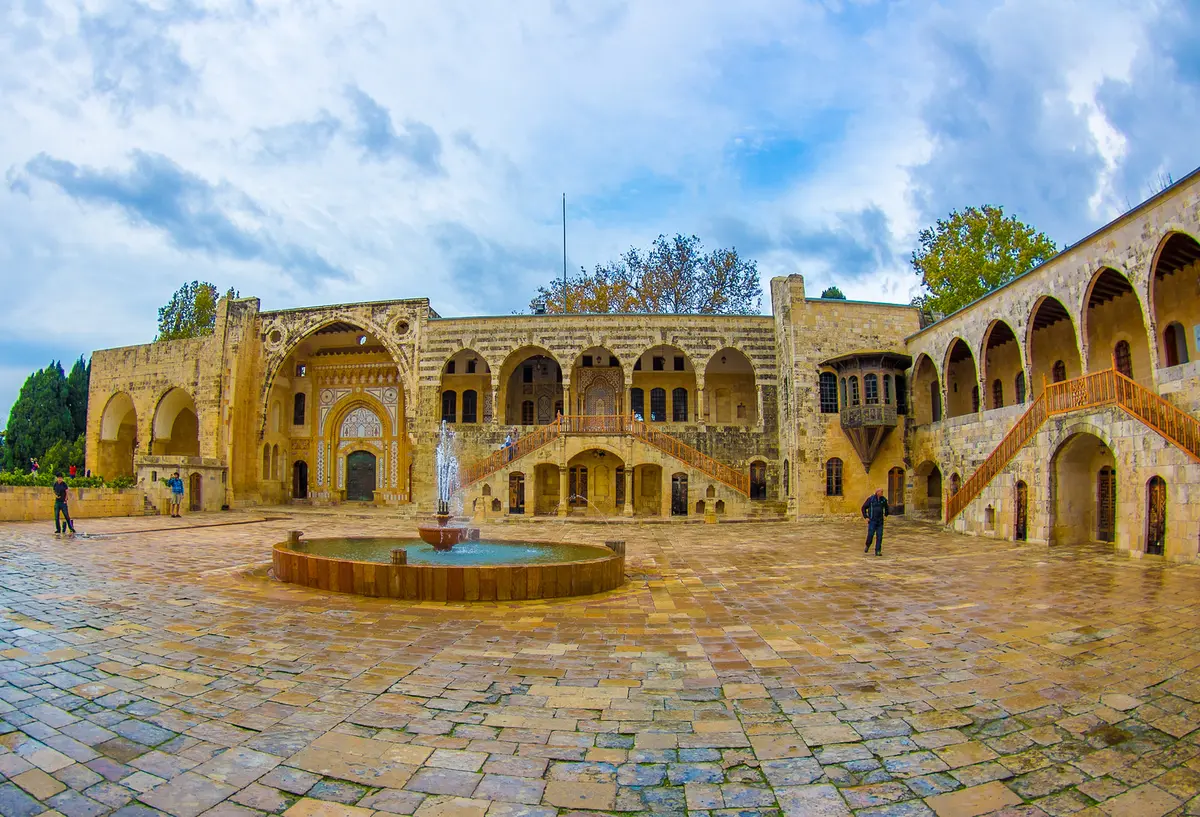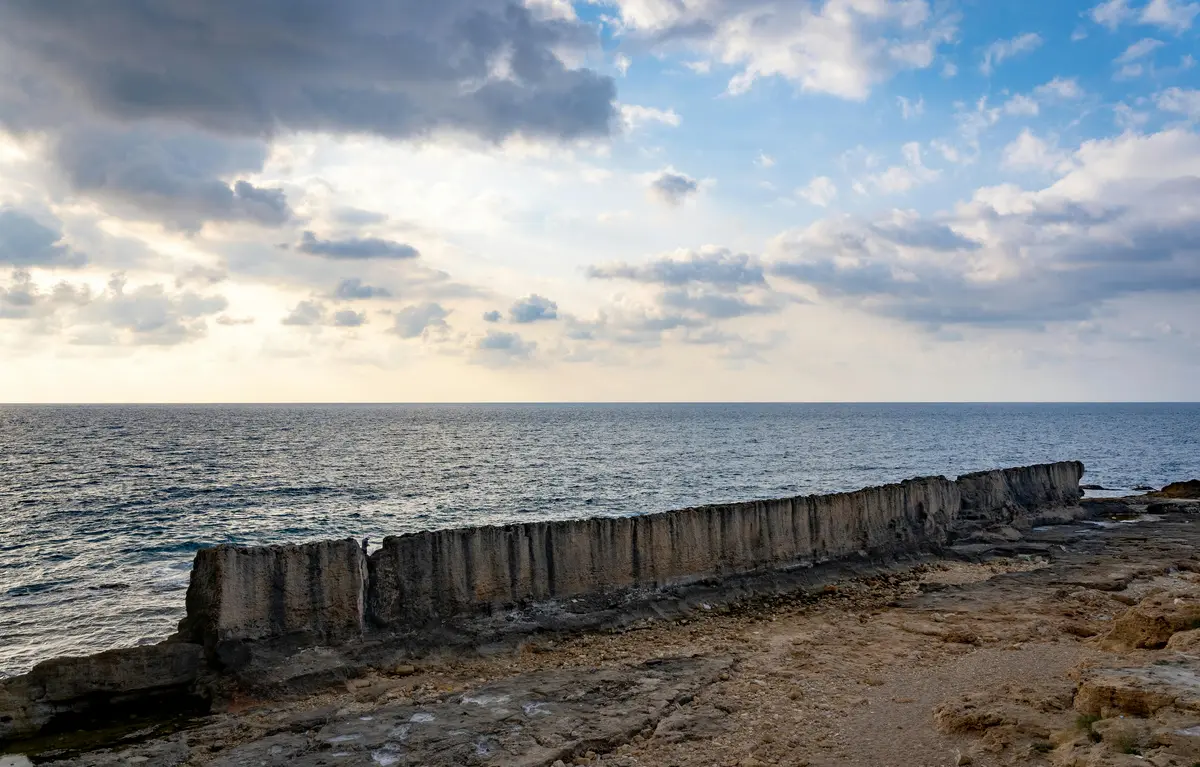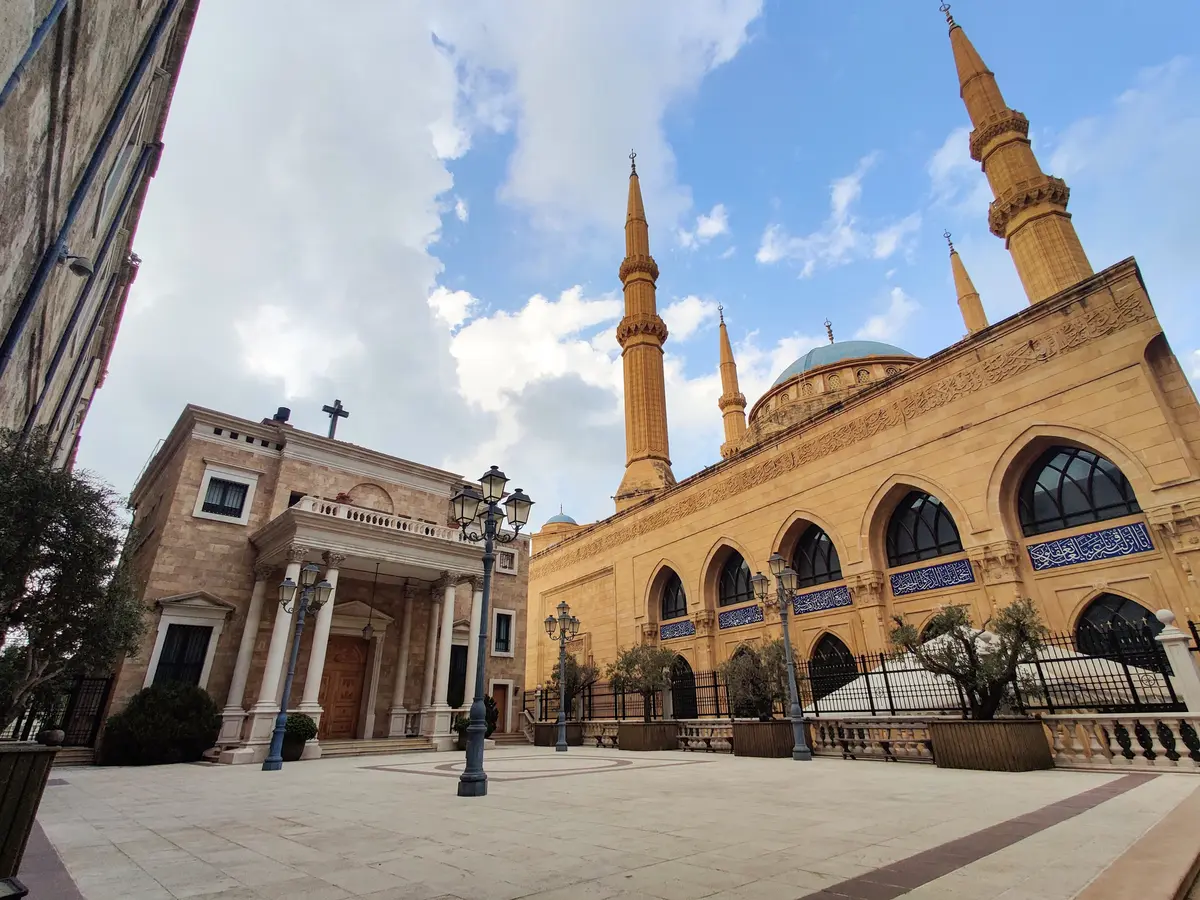Imagine standing before six Roman columns that tower 22 meters into the sky at Baalbek, tracing the origins of the alphabet in the 8,000-year-old port of Byblos, or hearing the echoes of chariots in Tyre’s colossal hippodrome. The Lebanon archaeological sites offer an unparalleled journey through layers of human history that easily rival the grandeur of Rome or Athens. This 2025 guide, built on recent traveler experiences and historical expertise, provides everything you need to explore these wonders safely and profoundly, transforming a simple vacation into an unforgettable historical expedition.
Travel Safety for Lebanon Archaeological Sites: A Reality Check
Before diving into ancient wonders, it’s crucial to address the practicalities of traveling in Lebanon today. While official advisories like the U.S. State Department’s Level 4 “Do Not Travel” warning exist—citing risks of crime, terrorism, and conflict—it’s important to understand their context. These broad alerts cover an entire country, including volatile border regions far from the main tourist trail. The on-the-ground experience for tourists visiting the primary Lebanon archaeological sites is often vastly different.
Recent travelers consistently report feeling safe and welcomed, emphasizing that the biggest “danger” is often the overwhelming hospitality. The key to a secure and memorable trip is smart, informed travel.
Essential Safety Protocols
- Hire a Reputable Local Driver/Guide: This is the single most important step. A trusted local expert provides more than just transportation; they navigate checkpoints with ease, understand regional dynamics, and ensure your itinerary remains on secure, well-trodden paths.
- Know the “No-Go” Zones: Your guide will ensure this, but be aware: avoid the regions within 5km of the Syrian border (like Hermel), the southern border with Israel, and all Palestinian refugee camps. The major archaeological sites in this guide are not located in these areas.
- Stay Informed & Aware: Enroll in your government’s traveler program (like the STEP Program for U.S. citizens) for alerts. Avoid public demonstrations and never photograph military personnel or installations.
- Maintain Situational Awareness: Have a contingency plan. Keep copies of your documents, have access to emergency funds, and understand your departure options.
1. Baalbek: The Unrivaled Grandeur of Imperial Rome
Of all the Lebanon archaeological sites, Baalbek is the one that universally inspires awe. Located in the fertile Bekaa Valley, this UNESCO World Heritage site boasts Roman temples on a scale that surpasses even those in Rome itself. It represents the absolute zenith of Imperial Roman architectural ambition, a statement of power and piety designed to leave every visitor speechless.
The Historical Significance: A City of Gods
Originally a Phoenician city dedicated to the god Baal, the Greeks renamed it Heliopolis (“Sun City”). Under the Romans, it was transformed over two centuries into one of the empire’s most magnificent sanctuaries. Pilgrims from across the world journeyed here to worship a trinity of deities: Jupiter, Venus, and Mercury (or Bacchus). The entire complex rests on a mysterious, massive pre-Roman stone platform, adding an ancient enigma to its Roman splendor.
What to See and Do: Your On-Site Itinerary
Your visit is a masterclass in theatrical architecture. You ascend a monumental staircase to the Propylaea (the grand entrance), pass through the unique Hexagonal Court, and emerge into the colossal Great Courtyard. Here, at the far end, stand the six remaining columns of the Temple of Jupiter. At 22 meters (72 feet) high, they are all that’s left of the 54 giants that once formed the largest temple in the Roman world.
The true highlight for many is the Temple of Bacchus. It is one of the best-preserved Roman temples anywhere in the world. Its sheer completeness is astonishing, from the monumental gateway carved with scenes of revelry to the intricate details of its ceiling panels. Nearby, the smaller, exquisitely designed Round Temple is associated with Venus.
Traveler Insights & Practical Tips
- Don’t Miss the Quarry: A short walk from the main site lies the Hajjar al-Hibla (“Stone of the Pregnant Woman”), the largest single stone block ever carved by humans, weighing an estimated 1,650 tons. It offers a mind-boggling glimpse into the ambition of ancient engineers.
- Location: Bekaa Valley, a 2-3 hour drive from Beirut.
- Cost: Approx. $10 USD.
- Best Time: Go early in the morning or late afternoon. Midday sun is intense with very little shade.
- Pro Tip: Pair a visit to Baalbek with a stop at the nearby Chateau Ksara winery for a tour and tasting in Roman-era caves.
2. Byblos (Jbeil): Where Written History Was Born
If Baalbek is about overwhelming scale, Byblos is about profound depth. Recognized by UNESCO as one of the oldest continuously inhabited cities on Earth, this charming coastal town offers a tangible walk through 8,000 years of civilization. More importantly, it’s directly linked to the birth of the Phoenician alphabet, the ancestor of the script you are reading this very moment.
The Historical Significance: The Birthplace of the Book
The story of Byblos is the story of communication. The city was a crucial hub for the trade of papyrus, which the ancient Greeks called “bublos” after the city’s name. From this root, we derive the words “bible” and “bibliography.” Excavations here unearthed the sarcophagus of King Ahiram, which bears the earliest known complete inscription of the Phoenician alphabet. Visiting Byblos is like standing at the dawn of recorded history.
What to See and Do: Your On-Site Itinerary
Start your exploration at the Crusader Castle. Built in the 12th century using stones from older Roman structures, its keep provides a stunning panoramic view of the entire archaeological park, the ancient port, and the Mediterranean Sea. From this vantage point, you can identify the foundations of the Temple of the Obelisks, the deep shafts of the Royal Necropolis, and the Roman Amphitheater.
Descend from the castle and wander through the ruins down to the Ancient Port, which is still used today by local fishermen. The adjacent Old Souk is a beautifully preserved labyrinth of cobblestone alleys filled with artisan shops, cafes, and galleries.
Traveler Insights & Practical Tips
- A Living Museum: Byblos perfectly blends its ancient ruins with vibrant modern life. You aren’t just in a historical park; you’re in a living town.
- Location: North of Beirut, approx. 1 hour drive.
- Cost: Approx. $8 USD.
- Best Time: Late afternoon. The town is magical at sunset, and you’ll miss the midday cruise ship crowds.
- Pro Tip: Enjoy a fresh seafood lunch at one of the restaurants overlooking the ancient harbor. The view is as incredible as the food.
3. Tyre (Sour): Chariot Races and Sunken Cities
On Lebanon’s southern coast, the UNESCO site of Tyre evokes the wealth and power of the Phoenician maritime empire, overlaid with some of the Roman world’s most impressive civic structures. As the legendary birthplace of Europa and Dido and the capital of priceless purple dye production, Tyre’s historical resonance is immense.
The Historical Significance: Master of the Seas
Tyre was one of the most powerful Phoenician city-states, famous for its merchant fleets and its legendary resistance to a seven-month siege by Alexander the Great. While its Phoenician history is its claim to fame, the most spectacular visible remains are from its time as a major Roman metropolis. The site is split into two distinct areas, Al-Bass and Al-Mina.
What to See and Do: Your On-Site Itinerary
Your ticket grants access to both sites. Start at Al-Bass, the mainland site. Here, you’ll walk along a sprawling Roman road through an extensive Necropolis lined with ornate sarcophagi. This path leads to a magnificent Triumphal Arch and then opens onto the site’s crown jewel: the enormous and exceptionally preserved Roman Hippodrome. Seating 20,000 spectators, it’s one of the largest chariot-racing arenas ever built.
Next, visit Al-Mina, the seaside site. This area features a beautiful colonnaded Roman street, remnants of baths, and a civic arena, with some ruins now picturesquely submerged by the sea.
Traveler Insights & Practical Tips
- Imagine the Spectacle: Walking the length of the hippodrome is a highlight. Stand between the turning posts and imagine the thunder of hooves and the roar of the crowd.
- Location: South of Beirut, a 1.5-2 hour drive.
- Cost: Approx. $8 USD (covers both sites).
- Best Time: Morning for Al-Bass, afternoon for Al-Mina to capture the best light on the seaside columns.
- Pro Tip: Wear a hat and bring water. Both sites offer very little shade and require significant walking.
4. Anjar: A Frozen Snapshot of the Umayyad Caliphate
Anjar is unique among the major Lebanon archaeological sites. Instead of revealing layers of different civilizations, it offers a perfectly preserved, singular moment in time: an Umayyad commercial city from the early 8th century AD. It is a fascinating lesson in early Islamic urban planning.
The Historical Significance: A Caliph’s Planned City
Founded by Caliph Walid I around 714 AD, Anjar was not an organic settlement but a meticulously planned inland trading hub. Its discovery in the 1940s revealed a fortified city with a rigid, grid-like layout borrowed from Roman military camps. This fusion of Roman planning with Islamic purpose makes it architecturally unique in Lebanon.
What to See and Do: Your On-Site Itinerary
The city’s logic is immediately apparent. Two main avenues, the Cardo Maximus and Decumanus Maximus, intersect at the center, where the base of a Tetrapylon still stands. These avenues divide the city into four quadrants, where you can clearly trace the extensive ruins of the Grand Palace, a mosque, public baths (hammams), and rows of over 600 shops that once lined the colonnaded streets.
Traveler Insights & Practical Tips
- For the History Buff: Anjar is an intellectual delight for those interested in urban planning and Islamic history. Its orderly ruins offer a different kind of beauty than the monumental chaos of Baalbek.
- Location: Bekaa Valley, a 1.5-2 hour drive from Beirut.
- Cost: Approx. $4 USD.
- Best Time: Easily combined with Baalbek for a full-day trip into the Bekaa Valley.
- Pro Tip: The modern town of Anjar has a strong Armenian heritage, offering a unique cultural juxtaposition and excellent Armenian cuisine if you plan to have lunch in the area.
5. Sidon (Saida): Crusader Fortresses and Living Souks
While its Phoenician roots run deep, the coastal city of Sidon offers a more tangible connection to its medieval and Ottoman past. It’s a place where history isn’t just excavated; it’s vibrantly lived in, making it one of the most authentic urban Lebanon archaeological sites.
The Historical Significance: A Medieval Trading Port
Sidon was a major Phoenician port, but its most visible landmarks date from the Crusader period. The city’s strategic location made it a prized possession for centuries, with its bustling souks serving as a vital link in regional trade.
What to See and Do: Your On-Site Itinerary
The city’s icon is the Sidon Sea Castle, a 13th-century Crusader fortress built on a small island connected by a stone causeway. After exploring the castle, dive into the adjacent Old Souk. This is not a tourist replica but a living, breathing marketplace with vaulted stone alleys where locals have shopped for centuries. Within the souk, don’t miss the beautiful Sidon Soap Museum, housed in a restored 17th-century factory that details the ancient art of olive oil soap making.
Traveler Insights & Practical Tips
- Authentic Immersion: Sidon offers the most authentic “local” experience. Be prepared for the vibrant chaos of a real Middle Eastern market.
- Location: South of Beirut, approx. 1 hour drive.
- Cost: Approx. $4 USD for the Sea Castle.
- Best Time: Morning for the castle, afternoon for the souk when it’s most active.
- Pro Tip: Sidon is easily combined with Tyre for a full-day trip exploring Lebanon’s southern coast.
6. Ouadi Qadisha (The Holy Valley) & The Cedars of God
Shifting from urban ruins to natural and spiritual landscapes, this UNESCO site in Lebanon’s northern mountains offers a different kind of historical journey. The dramatic Qadisha Valley served as a sanctuary for early Christian monastic communities, while the nearby Cedars of God are living relics of ancient history.
The Historical Significance: A Valley of Faith and Refuge
The rugged cliffs of the Qadisha Valley are dotted with ancient monasteries, such as St. Anthony of Qozhaya, which seem to cling impossibly to the rockface. This valley was a refuge for centuries, making it one of the most important early Christian monastic settlements in the world. Above the valley, the Forest of the Cedars of God is a small, protected grove of the majestic Cedars of Lebanon. These ancient trees were prized throughout antiquity, used by Phoenicians, Egyptians, and King Solomon to build their greatest temples and ships.
Traveler Insights & Practical Tips
- For Nature Lovers and Hikers: This site offers breathtaking natural beauty and incredible hiking opportunities. The experience is contemplative and deeply spiritual.
- Location: Northern Lebanon mountains, a 2-3 hour drive from Beirut.
- Cost: Varies by site; many monasteries are free to enter.
- Best Time: Spring (April-May) for wildflowers and pleasant hiking weather.
- Pro Tip: This area requires more physical activity than other sites. Wear proper hiking shoes. Access can be difficult in winter due to snow.
Practical Guide: Planning Your Adventure
Sample Day Trip Itineraries from Beirut
- The Bekaa Valley Classic: Beirut → Anjar → Baalbek → Chateau Ksara winery → Beirut.
- The Coastal History Trail: Beirut → Jeita Grotto → Byblos → Beirut.
- The Southern Phoenician Route: Beirut → Sidon → Tyre → Beirut.
Cultural Etiquette
- Dress Code: Dress modestly outside of cosmopolitan Beirut. For women, this means covering shoulders and knees. Carry a light scarf for entering mosques or traditional areas.
- Currency: Both US Dollars (USD) and Lebanese Pounds (LBP) are used. Bring new, crisp USD bills, as worn ones are often rejected. Use LBP for small purchases.
- Greetings: A friendly “Hi, kifak, ça va?” (a mix of English, Arabic, and French) is common and appreciated.
The Enduring Power of Lebanon’s Ancient Stones
A journey through the Lebanon archaeological sites is more than a history lesson; it’s a testament to human resilience. From the imperial might of Baalbek to the intellectual dawn at Byblos, these stones tell a continuous story. What makes the experience so powerful is that this history is not confined to museums. It’s woven into the fabric of living cities, creating a dynamic where the past and present are in constant dialogue. A trip here requires awareness, but the reward is an encounter with history so profound and authentic that you leave not just as a tourist, but as a witness.
